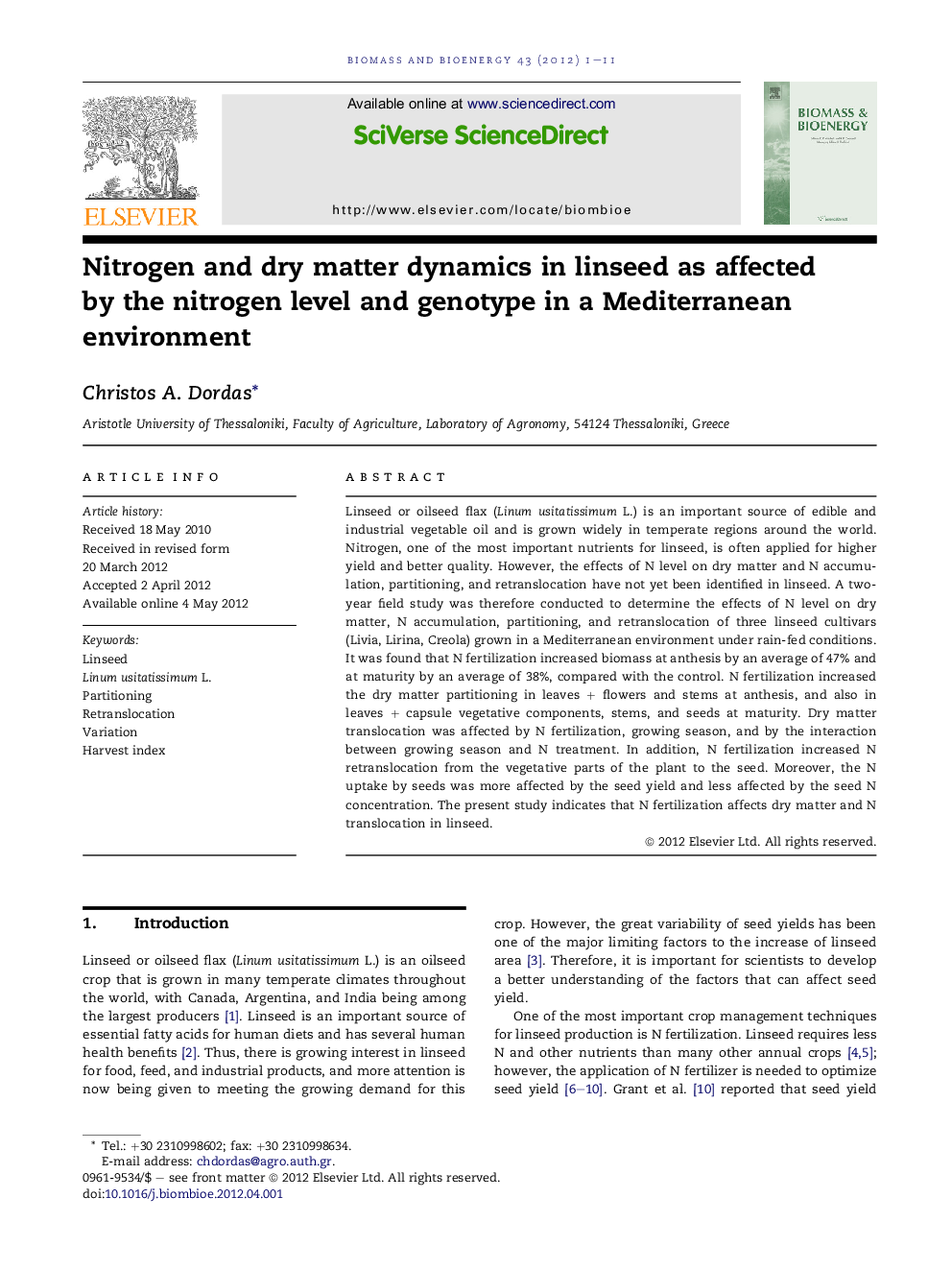| Article ID | Journal | Published Year | Pages | File Type |
|---|---|---|---|---|
| 677372 | Biomass and Bioenergy | 2012 | 11 Pages |
Linseed or oilseed flax (Linum usitatissimum L.) is an important source of edible and industrial vegetable oil and is grown widely in temperate regions around the world. Nitrogen, one of the most important nutrients for linseed, is often applied for higher yield and better quality. However, the effects of N level on dry matter and N accumulation, partitioning, and retranslocation have not yet been identified in linseed. A two-year field study was therefore conducted to determine the effects of N level on dry matter, N accumulation, partitioning, and retranslocation of three linseed cultivars (Livia, Lirina, Creola) grown in a Mediterranean environment under rain-fed conditions. It was found that N fertilization increased biomass at anthesis by an average of 47% and at maturity by an average of 38%, compared with the control. N fertilization increased the dry matter partitioning in leaves + flowers and stems at anthesis, and also in leaves + capsule vegetative components, stems, and seeds at maturity. Dry matter translocation was affected by N fertilization, growing season, and by the interaction between growing season and N treatment. In addition, N fertilization increased N retranslocation from the vegetative parts of the plant to the seed. Moreover, the N uptake by seeds was more affected by the seed yield and less affected by the seed N concentration. The present study indicates that N fertilization affects dry matter and N translocation in linseed.
► Dry matter translocation was affected by N fertilization, year, and their interaction. ► HI was affected by N fertilization while NHI was not. ► N fertilization increased N retranslocation from the vegetative parts to the seed.
